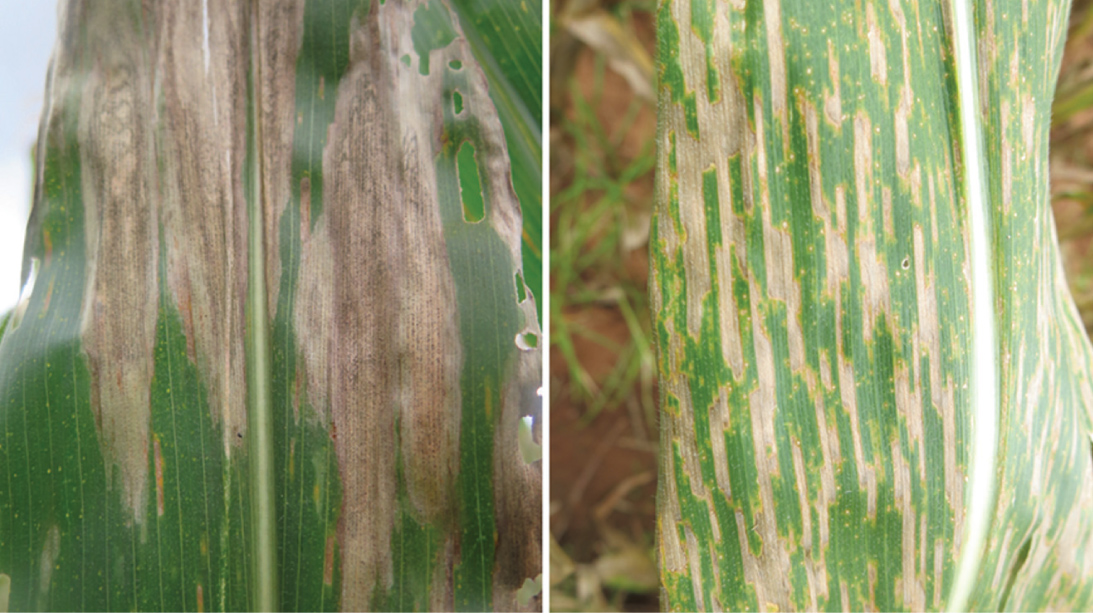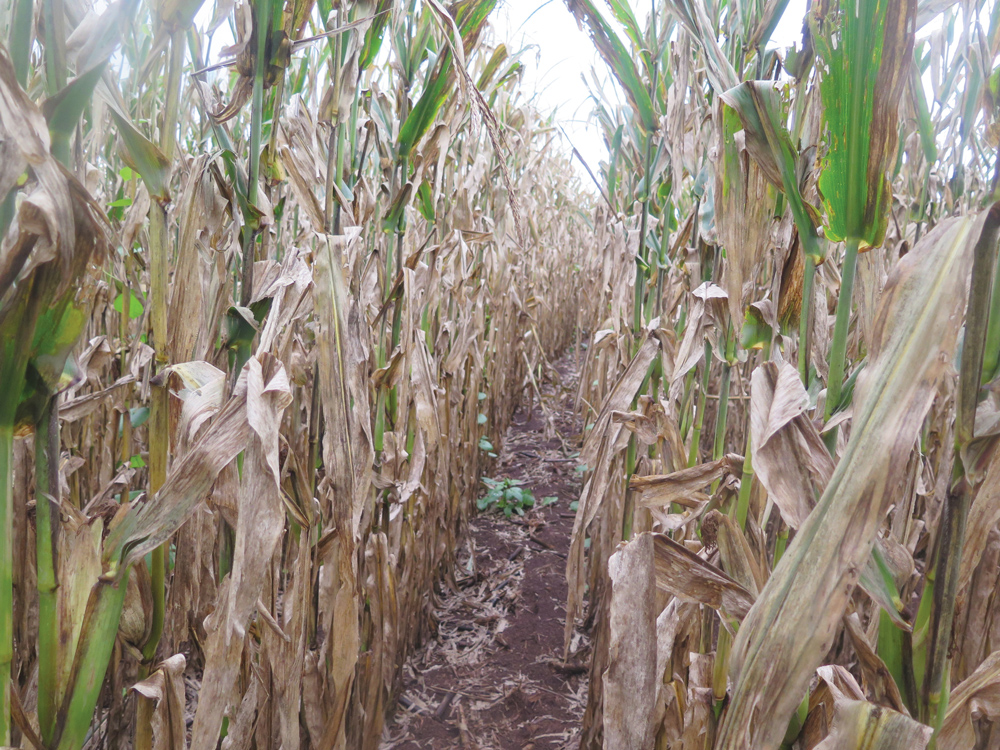May 2025
| DR GODFREY KGATLE, GRAIN SA RESEARCH COORDINATOR. FIRST PUBLISHED ON SAGRAINMAG.CO.ZA, 27 MARCH 2025 |
 |
GREY LEAF SPOT (GLS) AND NORTHERN CORN LEAF BLIGHT (NCLB) ARE TWO SIGNIFICANT FOLIAR DISEASES AFFECTING MAIZE IN SOUTH AFRICA. BOTH DISEASES GENERALLY DO NOT IMPACT YIELD SIGNIFICANTLY IF INFECTIONS OCCUR AFTER PHYSIOLOGICAL MATURITY (R5 TO R6).
GLS thrives in warm, humid conditions, causing grey lesions that reduce photosynthesis, while NCLB develops in cool, moist environments, producing cigar-shaped lesions that weaken plant defences. Both diseases are favoured by late-season rainfall and require integrated management practices, including the use of resistant hybrids, crop rotation, and fungicide applications to minimise potential yield losses.
In South Africa, GLS and NCLB have been particularly concerning in KwaZulu-Natal (KZN), where the diseases have caused extensive damage. Recently, however, increased prevalence in the Piet Retief area has been noted and it now seems to be increasing in the Highveld.

A field in KwaZulu-Natal infested by northern corn leaf blight and grey leaf spot.
Photo: Dr David Nsibo, University of Pretoria

A field in KwaZulu-Natal infested by northern corn leaf blight and grey leaf spot.
Photo: Dr David Nsibo, University of Pretoria
The rise in disease occurrence can be attributed to several factors:
High inoculum levels can lead to widespread infection. In such cases, if producers opt for a higher-yielding but less-resistant cultivar, a second spray application may be necessary, though this requires specialised equipment.
NCLB and GLS are well-understood and manageable diseases in South Africa, and their increased incidence in the Highveld is unlikely to significantly impact overall maize production. However, severe infections during the critical stages of tasselling (VT) to grain fill (R2 to R3) could affect individual producers, particularly in terms of reduced yield or quality. Extra spray programmes also add significantly to the production cost of producing maize in these areas.
Publication: May 2025
Section: Pula/Imvula